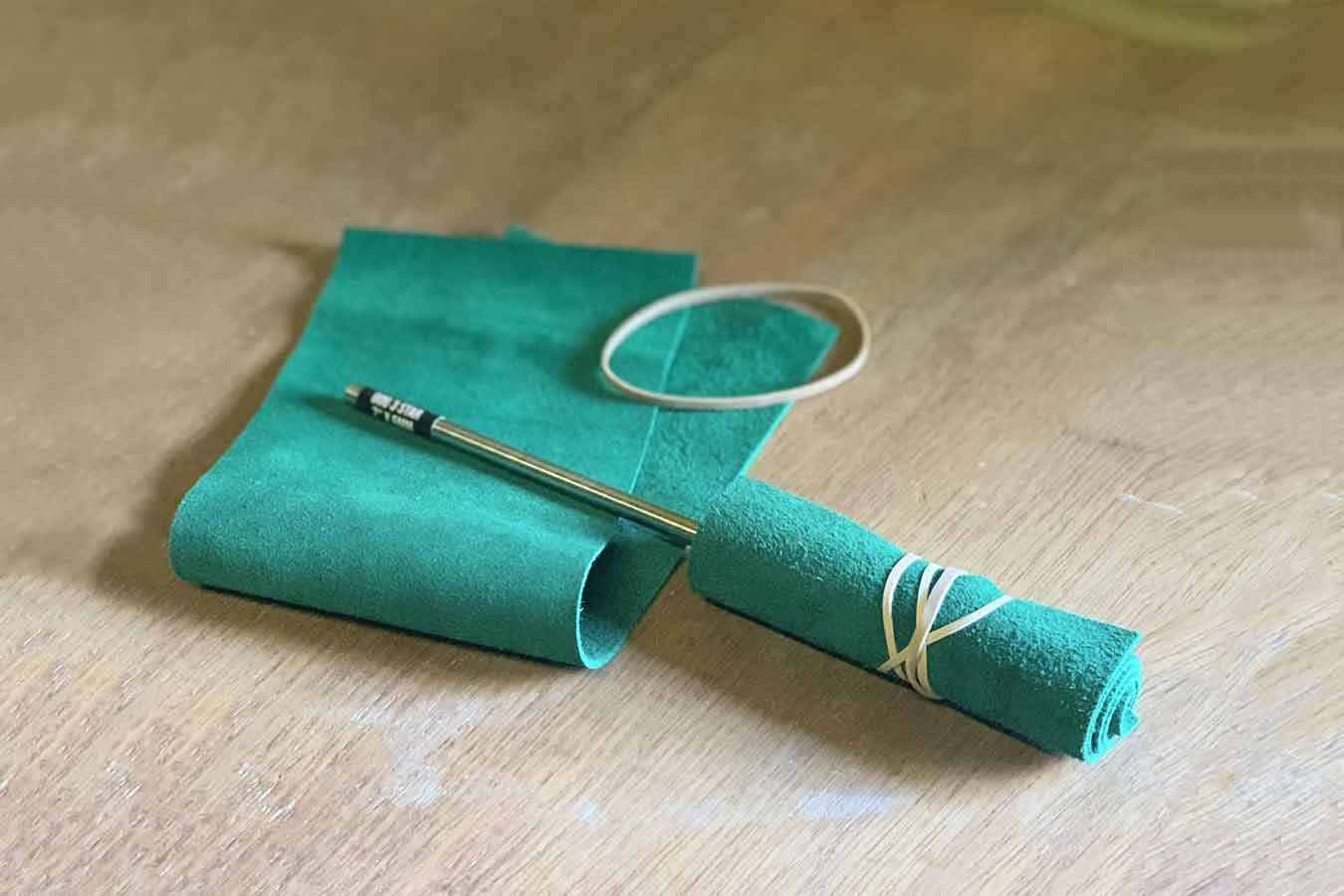This week’s blog will be focusing on the forearm. When it comes to the forearm there are many questions that surround it.
We will delve deep into the mysteries surrounding how to increase muscle mass, strength, reduce pain and aches.
Muscles In The Forearm
First of all let’s breakdown the muscles of the forearm, an anatomical breakdown if you will. We will try and keep this as simple as possible.

The forearm stretches from the elbow to the wrist, in total there are 20 muscles which are separated into two main compartments.
Anterior Compartment
The muscles here are mainly used to produce flexion in the fingers and wrist. Arranged into three layers, superficial, intermediate and deep.

The superficial layer contains 4 muscles:

- Flexor Carpi Ulnaris - Wrist flexion and abduction

- Palmaris Longus - Wrist flexion

- Flexor Carpi Radialis - Wrist flexion and abduction

- Pronator Teres - Forearm pronation

These four muscles are often called the 
The intermediate layer contains just one muscle - flexor digitorum superficialis. This muscle is made up of two heads, humero-ulnar and radial.
This muscle allows flexion at the proximal interphalangeal / wrist joints.
The deep layer of the anterior compartment contains three muscles:
- Flexor pollicis longus - Allows flexion of the thumb

- Flexor digitorum profundus - Our favourite muscle (essential element for mammoth grip strength) allows for flexion of the wrist joint and metacarpophalangeal.

- Pronator quadratus - Pronation and stabilisation of the forearm

How Build Forearm Muscle
The best way to build forearm muscle is by focusing exactly on that. There are some great exercises that will allow you to pack on some serious muscle to your forearms. We will explore these down below.
First of all let's start with one simple tip that will instantly set you on the right path to building forearm muscle.
Ditch the straps
Using straps to aid your lifting can allow you to pull more weight, but is it actually worth it in the long run. Using lifting straps can be great when maxing out on a lift, but that's about it. If you ditch the straps, you’re opening your forearms up to a whole new world of pain.
Not only will they be worked more but you will also be helping increase your grip strength.
You may notice a fall off at first when performing exercises such as lat pull downs, your forearms might give up before your back. But give it a few weeks and you’ll soon start to notice some new forearm gains appearing.
After a couple of weeks your support grip should start catching up and you’ll wonder why you ever needed straps in the first place.
For more information on the different types of grip you can check out our 'Types of Grip Blog'
Best Exercises For Building Forearm Muscle
With grip strength taking up the majority of our training, big forearms come as standard. It’s safe to say we’ve learned a few things or two about forearms and which exercises work best.
Hammer Curls
Simple, effective and easy to perform. The hammer curl is one of the most potent exercises for packing on some serious forearm muscle.
There are a few different variations of this exercise you can do.
Dumbbell Hammers
This variation of the hammer curl is performed with dumbbells.
Start off with a relatively light weight until you get used to the motion, then you can start cranking it up.
Pick up a pair of dumbbells, stand up and keep the weight by your side, palms facing inward.
You then want to lock into this position, keep your back tight and elbows tucked in by your side.
Then proceed to curl the weight up past parallel, hold for a second, then release back down.
That is the hammer curl in a nutshell. These are best performed with a mid weight for 10-12 reps per set if you’re looking to build up that forearm muscle.
- Palms facing inwards
- Back / Lats tight
- Curl up, elbows tucked in - Hold for 1 second
- Release back down
Rope Hammers
Although this is still a hammer curl, it is quite different to the dumbbell hammer curls. For this exercise you will need a cable machine and the rope attachment.
Set the rope to the bottom of the machine and keep the weight low to start.
The beauty of using this machine over a dumbbell is it increases the time under tension.
Pull the weight up from the cable grabbing the end of the rope. Tuck your elbows in by your side and squeeze up the weight keeping your back tight and elbows by your side.
The secret to this is slightly twisting out your wrists at the top of the motion. This will allow you to engage your biceps more.
- Rope at the bottom of the machine
- Back / Lats tight
- Curl up, elbows tucked in
- Slowly release back down
Zottman Curls
What, who ? Yep that’s right, Zottoman curls. Created by old school strongman legend George Zottman. George Zottman was born in 1867 Philadelphia a renowned strongman in his day with huge forearms and pressing power.

Zottman curl is an excellent variation of the standard curl focusing more on the forearms.
Using a pair of dumbbells stand straight with your arms by your side palms facing inward.
Curl the weight up as you normally would, palms facing upwards, then slowly twist your wrist towards your center then bring the weight back down, the key of this exercise is to perform it slowly and get the contraction in the forearm.
- Palms facing inward
- Curl the weight up palms facing up
- Twist at the top palms facing down
- Slowly return to original position
Reverse Bar Curl
This is a fantastic exercise for building forearm mass and strength.
If your gym has an ez curl bar this will be easier than with a straight bar as it will relieve any extra strain on the wrist.
Grab the bar fists up, probably a little bit of a closer grip than you would usually perform a regular curl, there should be a position on the EZ bar for this grip.
Lock in the lats and elbows by your side then simply curl the weight up towards your chin making sure you squeeze at the top.
Hold for a short pause then release back down, that's one repetition. The beauty of these curls is you can ‘cheat’.
This will allow you to overload the bar and use your bodyweight to aid you lift the weight then slowly release it back down.
It.s a great way to strengthen the forearms.
- EZ or Straight bar - close grip
- Double overhand grip
- Lock in your lats and elbows
- Curl up towards your chin
- Hold - Then release back down
Best Forearm Stretches
Warming up and stretching efficiently and regularly is the best way to improve your mobility and aid recovery.
Most forearm stretches stem from wrist flexion which allows you to stretch out the muscles we were discussing earlier.
Aside from massaging the muscles these stretches are the best if you are looking to warm up and help wrist flexion / mobility.
These stretches are really easy to perform and only take a couple of minutes each. It may feel boring at first but persist with them and you will soon see improvement in mobility.
Prayer Stretch
- Start with your palms together, fingers pointing up near the chin.
- Lower your hands down to your waist, keeping them close to your body then stop when you feel a nice stretch.
- Keep this position for around 10-20 seconds, then raise the hands back up to your chin.
- Repeat this 3 times.

Wrist flexor stretch
- Fully extend your arm out in front, palm facing upwards.
- Using your other hand, bend your wrist making sure the fingers point up to the sky.
- Do this until you feel a good stretch in the wrist forearm and hand.
- Hold the position for around 10-20 seconds then repeat 3-5 times on both hands.

Wrist Extensor Stretch
- Fully extend your arm out in front, palm facing down.
- Using your other hand, bend your wrist towards you making sure the fingers point down to the floor.
- Do this until you feel a good stretch in the wrist forearm and hand.
- Hold the position for around 10-20 seconds then repeat 3-5 times on both hands.
Performing these stretches once a day in the morning will hopefully become part of your routine. This will ultimately improve your wrist / forearm flexibility and help prevent any aches and pains.. Which runs nicely into the next section of this post.
Causes Of Forearm Pain
Forearm pain is something that is likely to affect most people at some point in their life.
There are a few reasons why you may be experiencing forearm pain but there are some ways we can help reduce the risk and the pain.
Overuse
The most common cause of forearm pain is overuse. Sports where you are putting a high degree of pressure on the muscles in the forearm can cause a form of strain. Sports such as tennis, weightlifting and golf are the usual suspects.
More recently the huge increase of use on computers, and length of time people are spending on them, has caused an increase in RSI.
Injury
Most of the time you’ll be able to think of the time when you will have injured your forearm. An injury, or acute trauma is most likely to occur if you fall or bang your forearm. This could even have caused ligament / tendon damage. In this case if unsure you should seek medical help from a professional just to make sure.
Nerve Entrapment
Another pretty common cause of forearm pain is a trapped nerve. You will usually encounter at least one of the following symptoms:
- Pain
- Numbness
- Tingling
Most of the time these cases will resolve in time but it could also be a sign of carpal tunnel syndrome.
Arthritis
This will occur in the wrist or elbow and will cause a dull ache sort of feeling in the forearm. The stretches mentioned above will help reduce the risk of arthritis and carpal tunnel syndrome.
Reduce The Risk Of Forearm Pain
You want to be proactive rather than reactive. The stretches mentioned above will really help you prevent some of the common causes of forearm pain.
If you are using a computer for a long period of time you could try taking small breaks every hour and performing a few stretches.
Desk Forearm Stretches
These can all be performed while sitting at your desk. Although we would recommend stretching your legs at the same time. Your work colleagues may give you some funny looks at first. But when they;re struggling with forearm pain and you’re not… That's all that matters.
Flexor / Extensor Stretch
Really easy, place the palm of your hand, fingers facing forward, as flat on the desk as possible. When you are in position try to lean forward giving a really nice stretch in the wrist and up the forearm. Hold the position for upto 30 seconds then we can move onto the next one.
Turn your hand around, fingers facing towards you. Right hand rotates clockwise and left anticlockwise.
When you are in position you can move your bodyweight backwards, this will again give a really nice stretch on the wrist and up the forearm.
Finally you can try some rotations. Clench your fist, this will help better engage the forearm, then simply rotate your wrist. You should feel all the muscles up your forearm working and flexing.
Rotate 5 times clockwise and five times anticlockwise on each hand.
These are three really simple stretches you could do at work 3-5 times a day. They should help relieve any pain you have been experiencing and help prevent and further forearm pains or aches.
Forearm Roundup
I think we have managed to cover a large portion of the forearm in this week’s post. It is a fascinating muscle group.
With some serious forearm workouts under your belt you can turn your pencil looking arms into bulging tree trunks.
Forearms are one of the first muscles you will notice on someone when wearing a t-shirt, which in a gym is most of the time.
“Holy sh*t, look at that dude’s forearms!” Said everybody about Frank McGraths arms.
We’ve added some great exercises above, if you add these into your weekly routine, it won’t be long before you start seeing the results.
Why not measure up your current forearm size, give it a few weeks then re-measure. I guarantee you'll be shocked by the results. Tag us in your progress @godsofgrip
Source Information
Support Grip - This is basically your grip endurance. How long can you keep holding onto or hanging from something. This is most useful for climbers, pull ups and mammoth grocery hauls.
TUT - Time Under Tension refers to the amount of time a muscle is held under tension or strain during an exercise set. During time under tension, each phase - or repetition is longer therefore increasing the length of your set. The idea is that this forces your muscles to work harder and optimizes muscular strength, endurance, and growth.
RSI - Repetitive strain injury is a general term used to describe the pain felt in muscles, nerves and tendons caused by repetitive movement and overuse.
CTS - Carpal tunnel syndrome is pressure on a nerve in your wrist. It causes tingling, numbness and pain in your hand and fingers. You can often treat it yourself, but it can take months to get better.





